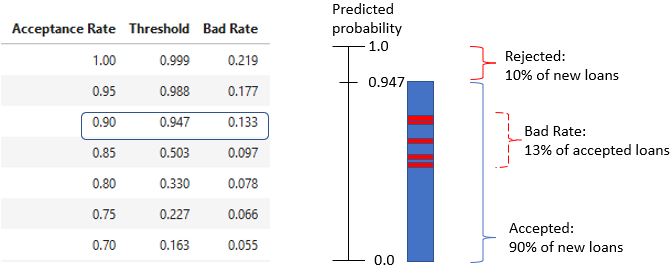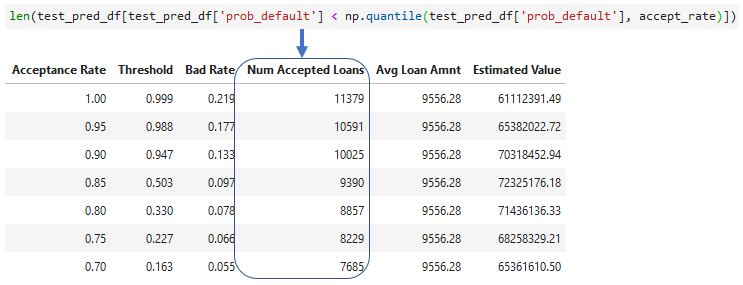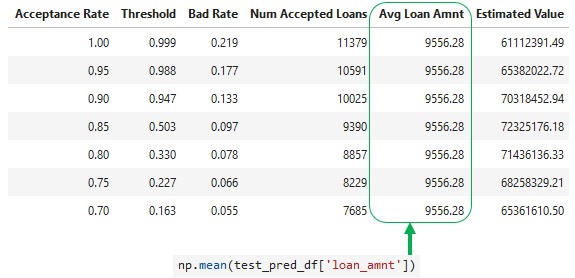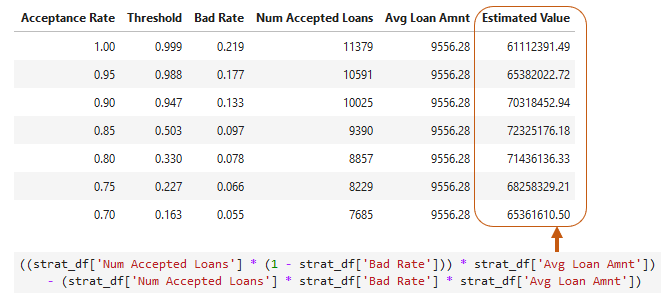Credit strategy and minimum expected loss
Credit Risk Modeling in Python

Michael Crabtree
Data Scientist, Ford Motor Company
Selecting acceptance rates
- First acceptance rate was set to 85%, but other rates might be selected as well
- Two options to test different rates:
- Calculate the threshold, bad rate, and losses manually
- Automatically create a table of these values and select an acceptance rate
- The table of all the possible values is called a strategy table
Setting up the strategy table
- Set up arrays or lists to store each value
# Set all the acceptance rates to test
accept_rates = [1.0, 0.95, 0.9, 0.85, 0.8, 0.75, 0.7, 0.65, 0.6, 0.55,
0.5, 0.45, 0.4, 0.35, 0.3, 0.25, 0.2, 0.15, 0.1, 0.05]
# Create lists to store thresholds and bad rates
thresholds = []
bad_rates = []
Calculating the table values
- Calculate the threshold and bad rate for all acceptance rates
for rate in accept_rates:
# Calculate threshold
threshold = np.quantile(preds_df['prob_default'], rate).round(3)
# Store threshold value in a list
thresholds.append(np.quantile(preds_gbt['prob_default'], rate).round(3))
# Apply the threshold to reassign loan_status
test_pred_df['pred_loan_status'] = \
test_pred_df['prob_default'].apply(lambda x: 1 if x > thresh else 0)
# Create accepted loans set of predicted non-defaults
accepted_loans = test_pred_df[test_pred_df['pred_loan_status'] == 0]
# Calculate and store bad rate
bad_rates.append(np.sum((accepted_loans['true_loan_status'])
/ accepted_loans['true_loan_status'].count()).round(3))
Strategy table interpretation
strat_df = pd.DataFrame(zip(accept_rates, thresholds, bad_rates),
columns = ['Acceptance Rate','Threshold','Bad Rate'])
Adding accepted loans
- The number of loans accepted for each acceptance rate
- Can use
len()or.count()
- Can use
Adding average loan amount
- Average
loan_amntfrom the test set data
Estimating portfolio value
- Average value of accepted loan non-defaults minus average value of accepted defaults
- Assumes each default is a loss of the
loan_amnt
Total expected loss
- How much we expect to lose on the defaults in our portfolio
# Probability of default (PD)
test_pred_df['prob_default']
# Exposure at default = loan amount (EAD)
test_pred_df['loan_amnt']
# Loss given default = 1.0 for total loss (LGD)
test_pred_df['loss_given_default']
Let's practice!
Credit Risk Modeling in Python






